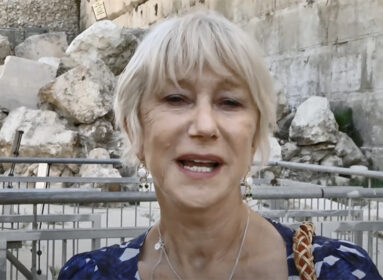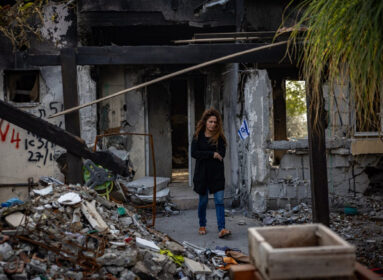
The American Jewish Year Book 2016 reveals an optimistic view of today’s American Jewish community, say the book’s co-editors.
By Cindy Mindell
HARTFORD–The North American Jewish community has been documented in encyclopedic form since 1899, when the first volume of the American Jewish Year Book (AJYB) was introduced by the Jewish Publication Society (JPS). Subtitled “the annual record of American Jewish civilization,” the year book, in addition to social-scientific and demographic statistics reflecting the changing nature of Jewish North America, has served as the premier vehicle for leading academics to publish long review chapters on topics of interest to and about the North American Jewish community.
Since 2012, Springer Publishing Company has published the book in cooperation with the Berman Jewish DataBank, housed at the University of Connecticut, and the Association for the Social Scientific Study of Jewry.
March saw publication of the 116th AJYB, supported by the Center for Judaic Studies and Contemporary Jewish Life at the University of Connecticut and the Center for Contemporary Judaic Studies at the University of Miami. Included in this volume is the 2015 Pew Research Center’s report, “A Portrait of American Orthodox Jews,” a response to the report from nine distinguished scholars, and a rejoinder by Pew researchers.
The book is co-edited by Arnold Dashefsky, PhD, and Ira M. Sheskin, PhD, who also co-wrote the chapter on the U.S. Jewish population. Dashefsky is professor emeritus of sociology at UConn, where he also served as the inaugural Doris and Simon Konover Chair of Judaic Studies. The founding director of the Center for Judaic Studies and Contemporary Jewish Life at UConn, Dashefsky is director emeritus and current senior academic consultant of the Berman Jewish DataBank. At the University of Miami, Sheskin is director of the Jewish Demography Project of the Sue and Leonard Miller Center for Contemporary Judaic Studies and professor and chair of geography.
In addition to topical articles, the 2016 volume includes population studies for the United States, world Jewry, and Canada, that are provided by Sheskin and Dashefsky, Sergio DellaPergola, and Charles Shahar, respectively.
Recently, Dashefsky and Sheskin spoke with the Ledger about some of the notable changes in American Jewish life from mid-2015 to mid-2016, and what that may mean for Jewish continuity.
Jewish Ledger (JL): What did you learn from the Pew’s A Portrait of American Orthodox Jews and how do you see that population affecting Jewish life and trends in this country?
ARNOLD DASHEFSKY (AD): One of the interesting findings in regard to Orthodox Jewry is that they represent about 10 percent overall nationally of the American Jewish population and that’s a change over the last couple of decades. I think a lot of people might have thought Orthodox Jewry was going to be disappearing. But it’s not and partly, that’s a result of the high fertility among Orthodox Jews. The estimate is that 10 percent of Jewish adults are Orthodox but overall, if you include the children in the population, that means that 13 percent of the American population are Orthodox. It’s true that a disproportionate number of those Orthodox Jews are located in New York City. As the number of Orthodox Jews grow in the share of the population, they’ve produced some changes in the way in which Jews respond: the Orthodox tend to be more politically conservative and are more likely to vote Republican.
IRA SHESKIN (IS): Between 2000 and 2013, the percentage of Orthodox Jews who think of themselves as Republican went from 25 percent to 50 percent. The Orthodox Jews who are becoming Republican are concentrated in the New York Metropolitan area and New York is going to go Democrat for the foreseeable future, with or without the Orthodox Jewish vote. So the increase in Orthodox becoming Republican probably isn’t going to affect presidential elections and the impact of the Jewish vote.
AD: There is a growing intolerance between the Left and the Right in U.S. politics. If that kind of intolerance is mirrored in the Jewish community, that could become an issue for the Jewish community. The Jewish community tends to pride itself on its unity, “We are one,” “Kol Yisrael arevim zeh bazeh” – “Each Jew is responsible for one another” – that could be eroded by this broader political culture of intolerance, which could become reflected in the American Jewish community. I don’t think that the dispute between right-wing and left-wing Zionists is helpful to the state of Israel.
JL: How can the American Jewish community use the information in the Year Book?
AD: I think the real challenge for the organized Jewish community is to read the social-scientific data that we and our colleagues present – not just in the Year Book but elsewhere – and create policies that respond to these challenges. Here, I would offer this sociological dictum that I like to share with my students, stated by a sociologist of the early 20th century, W.I. Thomas: if people define a situation to be real, then it is real in its consequences. That’s what we know now as a “self-fulfilling prophecy.” If you assume a negative outcome, then all of these challenges – like secularization, intermarriage, and geographic dispersion – are all going to produce very negative results. If you act in that way, you will assure the fulfillment of that prophecy. The challenge for the Jewish community is how to respond to these trends.
JL: In your opinion, should the latest studies on North American Jewish continuity be viewed as optimistic or pessimistic?
AD: Moment Magazine hosted a recent symposium, “What Will the Jewish World Look Like in 2050”. We were among a number of people interviewed and contrary to some more pessimistic folks in the community, we cited a number of factors that represented an optimistic viewpoint. What’s American Jewish life going to look like 30-plus years from now? Realistically, nobody really knows. If you had predicted in 1930 what was going to happen in the next 20 years that was going to revolutionize and drastically transform Jewish life – namely, the Holocaust and the creation of the state of Israel – no one would have believed you. Very unexpected developments certainly can happen.
There’s a certain consistency, in different measures, of the size of the Jewish population, which tends to show more Jews than we thought. Typically, most people might say that there are six million Jews, but really, it’s closer to seven million Jews. So we think that’s very encouraging.
We also find a lot of very constructive elements that have come out of the Pew Center’s research. In the 2013 Portrait of American Jews, Pew found that 94 percent of American Jews are proud to be Jewish, and 86 percent of Jews who do not consider themselves Jewish by religion but only by ethnicity and culture felt proud to be Jewish. There is, as my father z”l used to say, “dos pintele yid,” the “spark of Jewishness,” that remains. The trick is, how should the organized Jewish community cultivate it?
Of course, we have some pessimistic sources of concern. There’s a continuing geographic dispersal of the Jewish community, the increase in intermarriage, and the increase in secularization. Those trends are not just affecting the Jewish population in the United States; they’re affecting everybody and maybe, to some extent, they affect more in the general population than they do in the Jewish population.
IS: What is the difference between a Jewish pessimist and a Jewish optimist? The Jewish pessimist says, “Oy vey, can it get any worse?” and the Jewish optimist says, “Yes, it can!”
As a group, we tend to look at the negative stuff; every generation of Jews seems to think it’s going to be the last generation of Jews and we now know that that’s simply not the case. There’s still this large core of people out there in the United States who care deeply and are doing everything they can to pass it on to their children, and there’s the infrastructure to support the passing on. There are lots of positives: the percentage of people who call themselves Jewish who are younger are more likely to have gone to day school or to Jewish overnight camps. The latest generation is actively participating at higher rates in Hillel on college campuses than earlier generations did.
When you take a look at the strength of the American Jewish community, you really can’t just look at how many Jews there are. You also need to look at what exists and when you think about the infrastructure and organizations that exist for a population of probably just under seven million people, the number of organizations, the 140 Jewish Federations, the 220 Jewish Community Centers, 180 Jewish Family Service agencies, various vocational services, 45 Jewish Free Loan societies, and almost 800 national Jewish organizations – and that’s definitely an undercount, because they’re finding new ones all the time, and the fact that – I say this a little tenuously – there are still a lot of local Jewish newspapers. There are more than 200 Jewish overnight camps, 120 Jewish museums, and 150 Holocaust museums, memorials, and monuments. If you go back 50 years, a good portion of this didn’t exist and there were probably no Jewish museums, for example, outside of New York. So there’s a lot of infrastructure there that I think is going to be very helpful in keeping people Jewish and in keeping people wanting to be Jewish and prideful in their being Jewish.
Anybody looking at this Year Book would probably come to the conclusion that the Jewish community in this country is doing quite well.







 Southern New England Jewish Ledger
Southern New England Jewish Ledger













